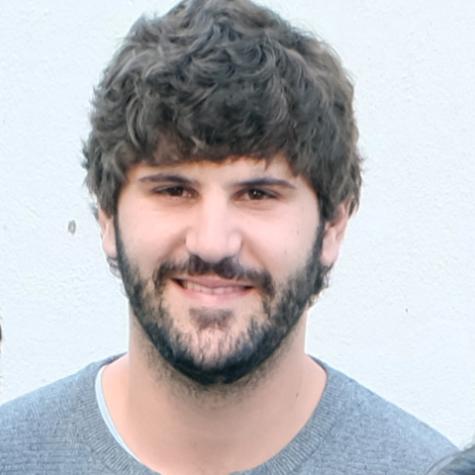Quantitative Evolutionary Microbiology
Project leader(s)
Research topic
With the rise of antibiotic resistance and the emergence of new forms of virulence, it has become clear that microbial evolution is at the heart of infectious diseases. The aim of our team is to study the microbial adaptation with a quantitative methodology. For that purpose, we combine four approaches: experimental evolution, comparative genomics, high throughput analysis of mutants and population genetics.
Experimental evolution combined with whole genome sequencing allow us to uncover the molecular bases of adaptation in test tubes as well as in mice colonization models. Comparative genomics allow us to study rates and tempo of adaptation in the wild at different time scale: species wise, for a sequence type or within a host as commensal or pathogen. Analyses of large collection of mutants in antibiotic resistance genes or small metabolic network allow us to decipher the molecular determinant of mutations effects.
Finally, integrated models of adaptation, such as Fisher Geometric Model of Adaptation, are used to capture the experimental and epidemiological observations.
All these approaches take full benefit of the sequencing revolution, the computing progresses, as well as some high throughput phenotyping. Thanks to these technical advancements, we can increase both the level of replication and the description level of the clones and switch from a descriptive science to a quantitative one.
We focus on Escherichia coli as a model species, that is both the most characterised bacteria and major public health due to both virulence and antibiotic resistance. Our goal is to unravel the rules that shape the adaptation of that species in the laboratory and in the wild. We are particularly interested in the quantification of genetic/genomic interactions (epistasis) as well as genome-environment interactions. The specificity of the team I manage is to have researchers with different backgrounds, bioinformatician, theoretician, pharmacist, medical doctors, microbial geneticist that cover the different facets of E. coli and allow thorough analysis of laboratory strains as well as the creation of natural isolate collections sampled in the hospital.
Ongoing projects:
ANR EcoRecEp (2024-2027,PI) Recombination and Epistasis at the Genome level, extant, molecular bases and implication on clone emergence in Escherichia coli
The spread of antibiotic resistance has clearly illustrated the need for an evolutionary approach to study infectious diseases. With the advent of genomics, molecular epidemiology clusters strains according to their genetic characteristics and looks for associations between these groups and variable phenotypes ranging from the hosts where they are isolated to the pathologies they cause. However, the evolutionary processes behind this intraspecific diversification are not clear, especially since genomics revealed important gene fluxes. Within a species such as E. coli, which kills nearly one million people a year through various pathologies, numerous clonal or phylogroup specificities are observed despite important genetic exchanges. These exchanges, by allowing any strain to benefit from the advantage associated with a gene received by transfer, should strongly limit the associations observed between phylogeny and specificities. The extreme case being antibiotic resistance carried by plasmids that are easily transmitted and yet remain strongly associated with certain groups of strains such as the epidemic E. coli sequence type ST131. To explain the emergence and successes of diverse clones including some with antibiotic resistance, genetic exchanges within the species must be asymmetric due to mechanistic barriers limiting the integration of genetic material or selective barriers due to epistatic interactions between various parts of the genome that are disrupted during genetic exchanges. While the study of these processes was until recently confined to a theoretical approach, we propose here a unique approach combining experiments and sequence analysis. The ability to reproduce high frequency genetic exchanges in the laboratory coupled with the analysis of tens of thousands of sequenced genomes and the access to very well characterised natural isolates will allow us to take a new quantitative look at the emergence of bacterial clones within E. coli.
PEPR DREAM (2021-2027, PI): Dynamics of REsistance to Antibiotics within the human gut Microbiota: combining diet informed population cohort and quantitative in vitro gut studies.
In 2018, in France, out of the 728 tons of antibiotics intended for human health, 93% were consumed in town and 7% in hospitals. Upon Antibiotic Treatment (AT), the densely populated gut microbiota is almost systematically impacted whether or not gut microbes were the cause of antibiotic prescription. Consequently, the gut is a major environment for the emergence and spread of Antibiotic Resistance (AR). Surprisingly, the response to AT in terms of AR genes (ARG) selection appears to be highly variable both quantitatively and qualitatively. Even negative selection on ARG upon treatment has been observed.
One likely explanation for these diverse responses is that the microbiota itself influences the impact of AT. Species from the microbiota may consume the antibiotic, release some stress factors when affected or deprive AR strains from resources upon perturbation. For an in-depth investigation of the role of microbiota composition on AR, we have built a solid consortium of teams with complementary expertise capable of analyzing AR in an in vitro gut system (minigut) combined to a large-scale diet informed cohort.
Miniguts, despite limitations like the absence of interactions with an immune system, allow us to deploy diverse molecular and synthetic biology tools to study AR in a complex and near to natural environment in which hundreds of species coexist. Miniguts allow the sampling of the microcosm at will and have a mid-throughput (96 replicates). This sustained replication is needed to explore the diversity of microbiota that is shaped by host diet. As input, we will use the NutriNet- Santé cohort that offers a precise characterization of the food habit of its 170,000 participants or Nutrinauts. Finally, Escherichia coli, the workhorse of molecular biology, is now a major public health concern due to its high AR. We will use this species as a sentinel of AR evolution in our systems.











